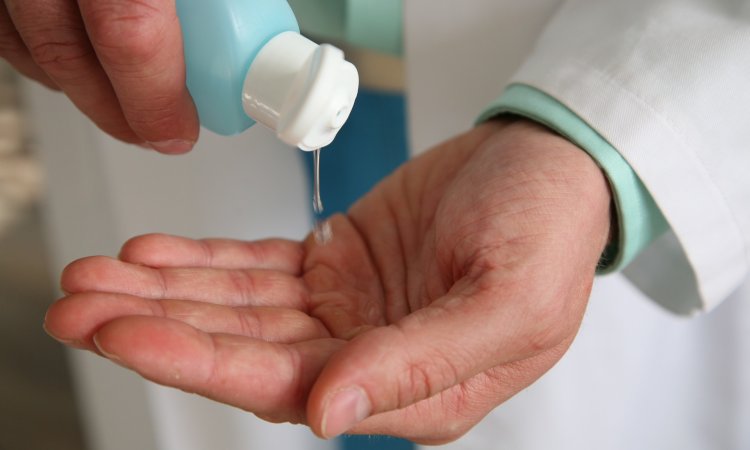
© freepeoplea – stock.adobe.com
News • Infection control
Study highlights transmission risk of resistant bacteria in hospital sinks
A new study reports the infection prevention steps taken to control a months-long multispecies outbreak of carbapenemase-producing Enterobacterales that occurred in a pediatric ward at the Toho University Omori Medical Center in Tokyo in 2017.
This study, published in the American Journal of Infection Control (AJIC), highlights the particular vulnerability for contamination through sinks and other water sources; indeed, even replacing all sinks in the ward did not stop this outbreak.
Carbapenemase-producing Enterobacterales (CPE) are a major public health threat because of their resistance to widely used antibiotics. The biological mechanism that confers multidrug resistance can be passed from one bacterial species to another, contributing to the growing epidemic of antimicrobial resistance. An outbreak of one CPE species in a hospital has the potential to turn into an outbreak involving many species, making it that much more difficult to stop. Many studies have shown that there is a high risk of CPE contamination in and around hospital sinks.
Our experience highlights the importance of focusing on sinks and other water-related areas in hospital wards, as these are critical for CPE transmission and therefore major fronts in the fight against antibiotic resistance
Sadako Yoshizawa
This new report from an academic medical center in Tokyo details the detection of CPE in a single patient in June 2016, which appears to have triggered an outbreak starting in March 2017 and ending in October 2017. The outbreak involved a total of 19 pediatric patients. The infection prevention team sampled microbes from patients and the environment of the pediatric ward to better understand how the outbreak was spreading. This sampling identified nine sinks contaminated with CPE, including six in hospital rooms and three more in a nurse center, a waste room, and an ice machine. The CPE-positive sinks were all found in rooms where CPE-positive patients had been treated. In rooms with CPE-negative patients, no sink contamination was detected.
As part of the outbreak control process, genome analysis was performed to identify the specific resistance mechanisms found in the bacterial strains, which included Klebsiella variicola, Klebsiella quasipneumoniae, and Escherichia coli, among others. Identical DNA sequences from all samples but one support the idea that the resistance mechanism could have been passed from one bacterial species to another within the hospital.
To help rein in the outbreak, all sinks in the pediatric ward were replaced with new ones in June 2017, and the new sinks were thoroughly disinfected with hydrogen peroxide. However, CPE contamination continued even after that step. The discovery of the same bacterial species in sinks in adjoining rooms indicates that pathogen transmission may be possible from one sink to another via the drains and connected plumbing.
Other measures implemented by the infection prevention team — composed of doctors, nurses, pharmacists, and microbiologists — included recommending hand disinfection after using sinks, introducing disposable tools for cleaning sinks, prohibiting mouth-washing with sink water, enacting disinfection and drying procedures to any items exposed to sink water, and more. Finally, after October 2017, no further CPE contamination was identified in patient samples or environmental surveillance.
“After months of intense infection control protocols, we were at last able to declare an end to this outbreak,” said Sadako Yoshizawa, MD, PhD, Associate Professor in the Department of Microbiology and Infectious Diseases at Toho University School of Medicine, Deputy Director of Clinical Laboratory at Toho University Omori Medical Center, and corresponding author of this study. “Our experience highlights the importance of focusing on sinks and other water-related areas in hospital wards, as these are critical for CPE transmission and therefore major fronts in the fight against antibiotic resistance.”
Recommended article

Article • Bacterial defense mechanism
Antibiotic resistance: a global threat to healthcare
Antimicrobial resistance (AMR) is becoming more prevalent around the world, constituting a serious threat to public health. When bacteria acquire resistance against antibiotics, common medical procedures – for example, in surgery – become impossible due to the high infection risk. Keep reading to find out about AMR research, development of new antibiotics and antibiotic alternatives.
Additional details from the study:
- Toho University Omori Medical Center is a 916-bed academic medical center with 55 pediatric inpatient beds.
- The first patient to be detected with CPE in June 2016 was a one-year-old boy hospitalized with cardiac disease.
- The resistance mechanism detected in this outbreak was a plasmid enabling the production of carbapenemase, which can make bacteria resistant to the carbapenem class of antibiotics. In this outbreak, all CPE strains except one harbored blaIMP-1, with identical blaIMP-1-carrying IncM1 plasmids.
Even a measure as definitive as replacing contaminated sinks may not be enough to stop the spread of antibiotic-resistant organisms
Tania Bubb
“The tremendous effort that went into controlling this outbreak is representative of the comprehensive and holistic approach to infection prevention that is required in these situations,” said Tania Bubb, PhD, RN, CIC, FAPIC, 2024 APIC president. “Even a measure as definitive as replacing contaminated sinks may not be enough to stop the spread of antibiotic-resistant organisms. This outbreak ended because the infection prevention team implemented a bundle of core processes related to hand hygiene, and the use and disinfection of hospital sinks.”
Source: Association for Professionals in Infection Control
12.04.2024







